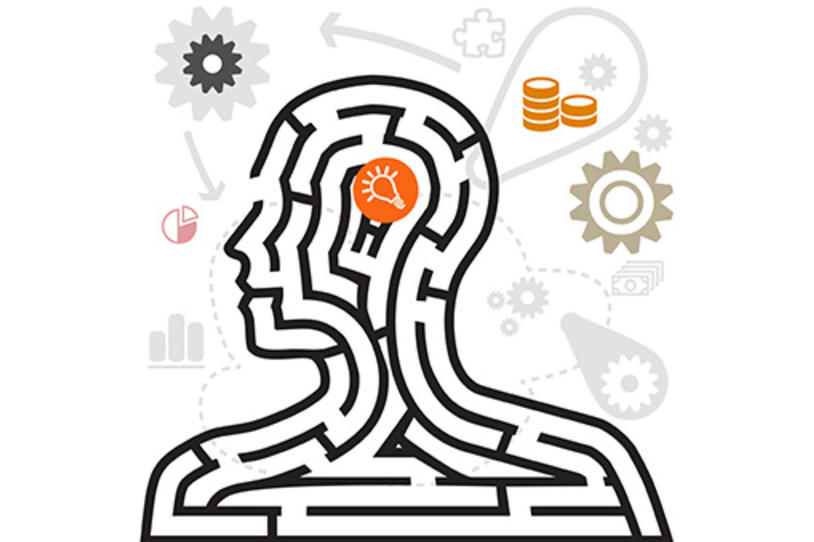
Our May 15 Third Thursdays Webinar touched on the similarities and differences between Parkinson’s and Alzheimer’s diseases and how researchers are learning from both. Watch the Webinar now on demand.
With lots of questions coming in during the live event, we couldn’t get to them all. David Irwin, MD, an instructor in neurology at the University of Pennsylvania, has helped us provide more answers.
The Webinar panelists said that Alzheimer’s and Parkinson’s are both diseases of “protein misfolding.” Can you explain what that means?
Dr. David Irwin: Both Alzheimer’s and Parkinson’s diseases are characterized by microscopic clumps of abnormally modified proteins in the central nervous system (brain and spinal cord). Alzheimer’s disease has clumps of two main proteins: beta-amyloid and tau. Clumps of beta-amyloid are called plaques, and tau clumps are called tangles. Parkinson’s disease has Lewy bodies in key areas of the brain that control movement; Lewy bodies are composed of the protein alpha-synuclein. For reasons that are not entirely known, these proteins are altered (cut, folded and chemically modified) and aggregate into Lewy bodies, tangles and plaques. This process is closely linked to neurodegeneration and is a target for many drug development efforts.
Autopsy studies often find a mix of these and other protein deposits in the brains of patients, suggesting that there may be an overlap in disease mechanisms between Alzheimer’s and Parkinson’s. Current research is aimed at helping physicians test for these abnormal, misfolded proteins in cerebrospinal fluid or through neuroimaging and other methods, to help diagnose these diseases more definitively and earlier.
They also mentioned “oxidative stress” as associated with both. What is that?
DI: Normally in cells there is a delicate balance between the production and removal of a bi-product of energy production called “free-radicals,” which contain oxygen. Oxidative stress is a term that describes when this balance is disrupted, resulting in accumulation of these “free-radicals.” This excess may have negative consequences for cells and contribute to several types of disease, including Alzheimer’s and Parkinson’s diseases. Oxidative stress has also been associated with aging.
Could diet play a role in onset of these diseases: too much protein or foods linked to inflammation?
DI: Dietary proteins are different than the specific proteins that are found in Alzheimer’s disease and Parkinson’s disease (tau, beta-amyloid, alpha-synuclein), and there are no direct associations between dietary protein intake and the accumulations of these proteins in the brain.
A healthy diet has a universal benefit for all forms of health, including cardiovascular function. Vascular disease and associated inflammation can contribute to cognitive dysfunction, so it is important to avoid negative effects of hypertension, high cholesterol and diabetes. It is always important to have a healthy, active lifestyle with a well-balanced diet. We also know the more active that patients are mentally (e.g., reading, interacting socially and being cognitively stimulated), the more resistant they are to pathological changes in the brain. This theory is called “cognitive reserve,” and it suggests that partaking in intellectually stimulating activities has beneficial effects on memory and well-being.
Is the loss of sense of smell a good predictor for Alzheimer’s as it is for Parkinson’s?
DI: Loss of smell, or anosmia, has been described as an early sign of both Alzheimer’s and Parkinson’s. Examination of part of the brain called the olfactory bulb, which processes smell information, shows signs of degeneration in both Alzheimer’s disease and Parkinson’s disease.
What makes hallucinations occur? Are they associated with Alzheimer's or Parkinson's disease?
DI: Hallucinations are most common in Lewy body dementia and in Parkinson’s disease, although they can occur less commonly in Alzheimer’s disease and other dementias. The most common forms of hallucinations in Lewy body dementia and Parkinson’s disease are visual hallucinations, where patients may misinterpret shadows or see well-formed figures or animals. The exact cause of these hallucinations is not clear, but they have been linked to the amount of Lewy bodies in the brain where visual information is processed. Hallucinations are usually benign and not disturbing to patients, but there are medical treatments that may help relieve these symptoms, so it is important to discuss them with a physician.
What are the differences in types of dementia: Parkinson’s disease dementia; Lewy body dementia; normal, aging dementia?
DI: Dementia is a general term that describes a loss of cognitive function that impairs a person’s ability to function independently. There are many causes for dementia including Alzheimer’s disease, Parkinson’s disease and Lewy body dementia. Although age is a risk factor for developing many forms of dementia, aging itself does not directly cause dementia and it is possible to live to be over 100 years old without significant cognitive deficits.
Lewy body dementia and Parkinson’s disease are very similar clinically and pathologically (meaning the appearance of the brain under the microscope). Both conditions have movement difficulties, but there is a difference in the timing of cognitive problems between these conditions. The clinical distinction between Parkinson’s disease dementia and Lewy body dementia is made using the “one-year rule.” Patients who have Parkinson’s disease with motor problems for one year or more before developing dementia are classified as with Parkinson’s disease dementia. Those who have cognitive impairments within one year of the onset of motor difficulties or before the onset of motor problems are diagnosed with Lewy body dementia.
As mentioned above, Parkinson’s disease is characterized by the presence of Lewy bodies and so is Lewy body dementia. A key area of research is focused on determining the reason for the clinical difference in the progression of cognitive symptoms in these diseases.
Learn more about Lewy body dementia in our Webinar from March 2014.
